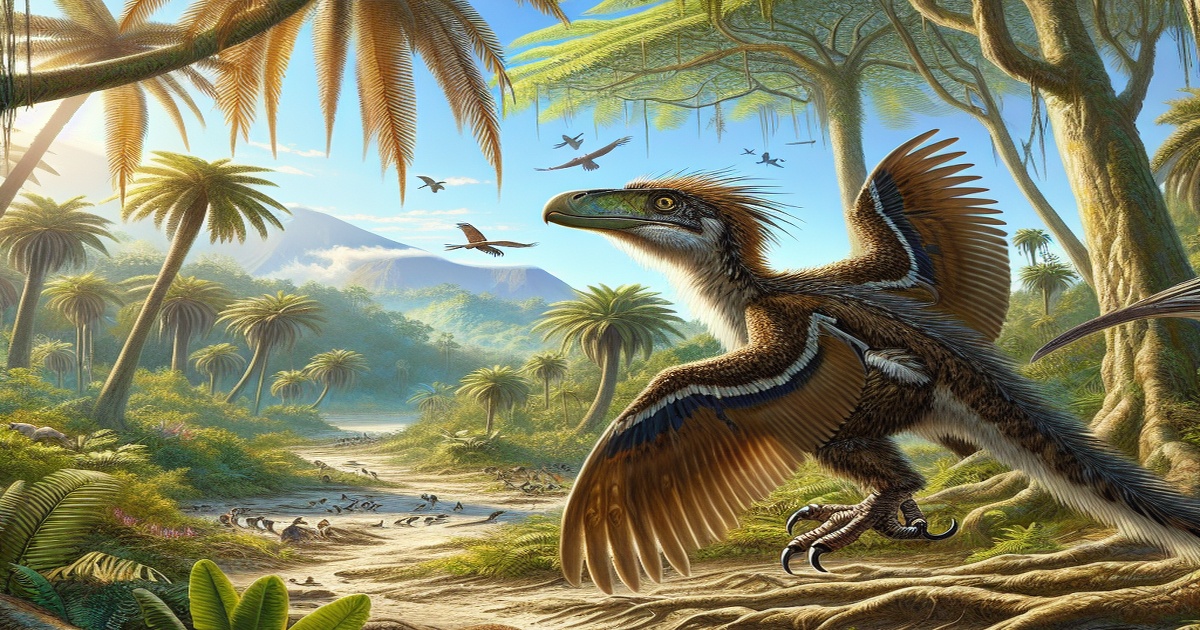A collaborative research team from China and the United States has announced the discovery of the "Chicago Archaeopteryx," a remarkably well-preserved specimen of the iconic Archaeopteryx. This find offers new perspectives on the evolutionary journey from dinosaurs to modern birds. The team's findings were published in the journal Nature in May 2025. The research was spearheaded by Hu Han from the Institute of Vertebrate Paleontology and Paleoanthropology, part of the Chinese Academy of Sciences, and Jingmai O'Connor, an Associate Curator at the Field Museum of Natural History in the US.
The fossil, acquired by the Field Museum in 2022, represents the 14th known Archaeopteryx specimen. It is also the smallest, approximately the size of a pigeon. The fossil boasts an exceptionally intact skeleton, along with impressions of soft tissues and feathers. Researchers utilized advanced techniques like high-resolution CT scanning and 3D reconstruction to uncover previously unseen details of the skull, soft tissues, and plumage.
The skull of the specimen is particularly noteworthy, featuring a nearly complete palate, a structure rarely preserved in fossils of this age. This feature suggests an intermediate morphology between troodontids and later Cretaceous birds. The study indicates that Archaeopteryx played a crucial role in cranial evolution, marking a shift towards a less rigid cranial structure compared to non-avian theropods.
The fossil also revealed traces of soft tissues, including well-preserved skin, toe pads, and feathers. The toe pad morphology resembles that of modern ground-dwelling birds, suggesting that Archaeopteryx may have been more mobile on land than previously thought. Notably, this specimen is the first Archaeopteryx fossil found to possess tertial feathers, which are located between the wings and the body. These feathers likely evolved for flight, creating a continuous aerodynamic surface, an adaptation not seen in non-avian dinosaurs closely related to birds.
Researchers believe these new findings clarify the combination of traits present in Archaeopteryx, refine ecological predictions, and shed light on the unique evolutionary history of the Archaeopterygidae. Peer reviewers from Nature praised the fossil as the most complete and best-preserved Archaeopteryx specimen to date, especially in terms of the skull, emphasizing its exceptional research value. The discovery not only enhances our understanding of the morphology and ecology of early avian species but also highlights the advancements in modern paleontological techniques.







7 Comments
Habibi
This is incredible! This is how we learn about our history.
ZmeeLove
So many beautiful details about its life and behaviors!
Muchacho
Expensive CT scans and 3D reconstructions - are we getting value for our money with these studies?
Coccinella
3D reconstructions and CT scans are incredible tools! Such an advance in technology. Scientists can see so much more in them now.
dedus mopedus
Published in Nature? That definitely doesn't mean it's faultless, you have to take these findings with a grain of salt.
ytkonos
I'll wait for an independent analysis before I get too excited. Scientific claims often crumble under scrutiny.
lettlelenok
Archaeopteryx holding secrets for ages, finally being revealed! The skull preservation rocks!